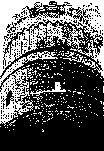
Grand Water Works
In 1848 a damning report revealed that 36.6% of the Croydon community death rate could have been avoided if there had been a proper water supply and sewage system. As a consequence, on the 1st August 1849 a Public Health Act was applied to Croydon. By current day standards this was like imposing a Foot & Mouth restriction on the local authority.

In January 1850 the local authority made an application to the General Board of Health to borrow money for the necessary work. The loan for £196,000 was repayable over 30 years.
There was a good supply of water in Sturt's Yard, just off Surrey Street and Scarbrook Road. Beneath the chalk it was also believed that there was a copious supply of water too. The problem was how to extract the water, which would need a powerful pump.
Just down the road was a purpose built pumping station that was up for sale after the demise of the Croydon Atmospheric Railway. The pumping station was purchased for £250 and dismantled so that it could be rebuilt over the wells in Sturt's Yard.

The next step was to find somewhere to store the water. Park Hill Farm was chosen by the Board of Health and the Archbishop of Canterbury. One acre was purchased for £100 in 1851 and work commenced to build a huge underground reservoir to hold 950,000 gallons.
On 11th December 1851 the Archbishop started the pumps and was taken by carriage to the Park Hill reservoir to see the results. The water got there through a 12 inch main which passed along Mint Walk, Barclays Road and a special aqueduct near Chatsworth Road.
Many people were there in the underground reservoir to hear the Archbishops speech which had to be cut short because the reservoir was filling up. This achievement was short lived due to a housing increase in the 1860's which led to a reduced water pressure.
Baldwin Latham solved this problem. Apart from designing all the sewage systems, he gave the area proper water pressure by building the water tower. The design features he said were due to he desire that the all buildings should be grand.
He set up his own practice in 1870 and lived in Park Hill House, within sight of the Water Tower. He eventually moved to Havelock Road until his death in 1917.